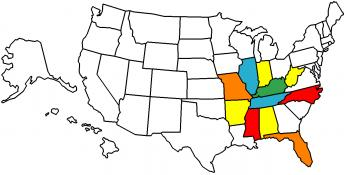I've got a project going that involves a gs1100G motor. I am building a transcontinental racebike that hopefully will be able to cruise comfortabley at 100mph.
The motor is going to be spun 90 degrees counterclockwise (looking from above) and the output shaft that used to spin the driveshaft is going to power a jackshaft.
Picture an exposed primary drive on a Harley...except mine will be on the right side of the bike. I am doing this for a few reasons, common sense and practicality are not among them...

I am going to use the jackshaft to (hopefully) be able to change gear ratios easily so I can test the bike before the race. Taking off in first gear wont be a big deal...If I have to feather the clutch to get it moving, I dont care, I just want it to be at the optimal rpm when I hit cruising speed. I know the 5 speed tranny limits top end a bit...I will need to balance speed/fuel economy ( the bike will have a dummy oil tank filled with gas/elec fuel pump) with speed.
Anybody follow me here? I know it probably sounds stupid to some of you, but I really want to win this race and the chopper show that follows. Thats never been done before at the Smokeout.
Heres an example of a jackshaft...
Yes, mine will be wider to align withthe output flange sticking off the right side of the bike...
I'm thinking a sprocket mounted directly to the output flange turning another on the jackshaft using 530 chain and a tensioner...simple and strong.
Any comments /suggestions? Anyone mess with jackshafts on racebikes/dragster type stuff where you changed sprockets alot?



 Do you think cooling airflow will be a problem at high speed? Maybe a cylinder head temp gauge on the rear cylinder may be in order during testing. The motor will be stock, or close to it. Its a used motor, and I know they are very reliable in stock trim, so no fancy race parts (like they make any for that motor...
Do you think cooling airflow will be a problem at high speed? Maybe a cylinder head temp gauge on the rear cylinder may be in order during testing. The motor will be stock, or close to it. Its a used motor, and I know they are very reliable in stock trim, so no fancy race parts (like they make any for that motor... )
)


 I've always felt like torque wants to stand the bike straight up, but that's me and I don't spend any time at 100mph. I'm only half as crazy as Mark. Maybe not even
I've always felt like torque wants to stand the bike straight up, but that's me and I don't spend any time at 100mph. I'm only half as crazy as Mark. Maybe not even 

Comment